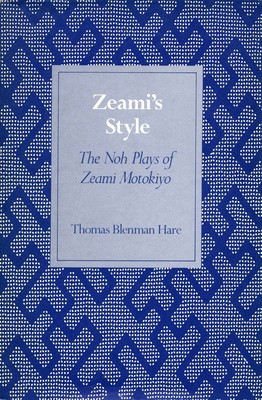
- We will send in 10–14 business days.
- Author: Thomas Blenman Hare
- Publisher: Stanford University Press
- ISBN-10: 0804726779
- ISBN-13: 9780804726771
- Format: 15.3 x 23.2 x 2 cm, softcover
- Language: English
- SAVE -10% with code: EXTRA
Reviews
Description
This is the first full-length study of Zeami Motokiyo (1363-1443), generally recognized as the greatest playwright of Japan's classical Noh theater. The book begins with a biography based on the known documents relating to Zeami's life. It then examines the documentary evidence for authorship and explains the various technical aspects of Noh. Subsequent chapters explore the role of the old man in noh (particularly in the play Takasago), as well as Zeami's plays about women and warriors, with primary attention to Izutsu and Tadanori. The book concludes with a general discussion of Zeami's style and the relationship between his dramatic theory and his plays.
EXTRA 10 % discount with code: EXTRA
The promotion ends in 14d.19:07:09
The discount code is valid when purchasing from 10 €. Discounts do not stack.
- Author: Thomas Blenman Hare
- Publisher: Stanford University Press
- ISBN-10: 0804726779
- ISBN-13: 9780804726771
- Format: 15.3 x 23.2 x 2 cm, softcover
- Language: English English
This is the first full-length study of Zeami Motokiyo (1363-1443), generally recognized as the greatest playwright of Japan's classical Noh theater. The book begins with a biography based on the known documents relating to Zeami's life. It then examines the documentary evidence for authorship and explains the various technical aspects of Noh. Subsequent chapters explore the role of the old man in noh (particularly in the play Takasago), as well as Zeami's plays about women and warriors, with primary attention to Izutsu and Tadanori. The book concludes with a general discussion of Zeami's style and the relationship between his dramatic theory and his plays.


Reviews